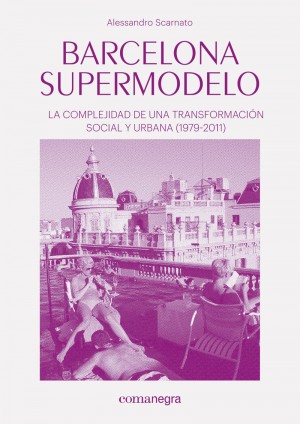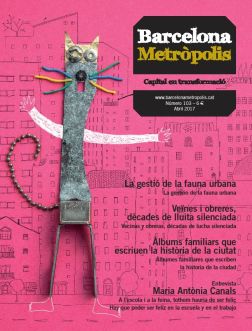 Barcelona supermodelo. La complejidad de una transformación social y urbana (1979-2011) (Supermodel Barcelona. The complexity of a social and urban transformation. 1979-2011)
Barcelona supermodelo. La complejidad de una transformación social y urbana (1979-2011) (Supermodel Barcelona. The complexity of a social and urban transformation. 1979-2011)
Author: Alessandro Scarnato
Published by: Editorial Comanegra and Barcelona City Council
Barcelona, 2016
Today, the term “Barcelona Model” has several different meanings, not just because the elements it incorporates have evolved over the years, but because there is much discussion on which elements actually form part of it.
Some define it as a redistributive and participative urbanism, born from the struggles of the transition to democracy and soiled by the Olympic Games, while Alessandro Scarnato sees it as an urban transformation programme inspired by social democratic ideals (that never fully materialised), using public and private capital, in which architects made an intellectual and civic commitment to modernise outdated infrastructure and services and to build a city that works for its people, with tourism as a crucial economic driver.
Such a project could not turn away from the archistar phenomenon – a Spanish neologism that refers to a famous or “star” architect. On the contrary, this would be an important factor in the international image of the city, which was seen as a kind of “city state”, a metropolis with a supranational projection. The Olympic Games, then, did not undermine it, but provided the opportunity to carry it through, because in the years before, the project had been defined on a theoretical level and the required legal framework for redeveloping public spaces had been drawn up, but few interventions had actually been completed and the oldest part of the city, an essential focal point of the study, was still a poor, deprived neighbourhood.
Scarnato is forceful in his definition and defence of the model, but more ambivalent in his analysis of the crisis that befell it, or at least he gives a complex perspective that is far removed from the types of criticism that culminate in the somewhat xenophobic cry of “La Rambla for Barcelonians”. He accepts the shift from a “model” to a “brand” (and with it, the view that a brand is something negative) but he excuses the actions (especially the initial ones) of Procivesa, which critics deemed to be speculative. He attacks trivialisation, but defines it very specifically, with a focus on the lack of balance between the contemporary and historical heritage. And above all, he puts the death of the “model” down to the difficulty of, in a short period of time, accepting the inconveniences of living with success and its unwanted consequences (like mobbing, corruption and how the city is held hostage by international capital), placing the turning point in 2004.
The book ends with a firm claim that Ciutat Vella has improved over the last thirty years and with a nod to today’s municipal authority, even though the author’s definition of the “Barcelona Model” is rather different to this Administration’s. The challenge, he believes, is to overcome the breakdown in this endangered model’s capacity to regenerate. His solutions, overly vague and without asking what Barcelona should produce, are to turn away from standardised consumption; give politics a direction; more public housing; reduce the number of private vehicles; and revive architects’ sense of civic purpose.



